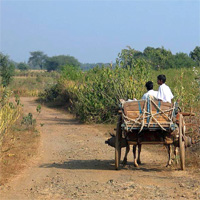  Rural India has overtaken the urban class in terms of growth in subscriber base and operators are banking in this market to continue growth momentum. But amidst this shift in focus, it is important to have the right strategies in place as merely replicating the existing strategies will not work in a segment where significant amount of population still find it difficult to meet ends forget about spending on communications.
A new research by Ovum highlights that in wake of low ARPUs and higher costs of providing services to this segment, a totally different approach which also has to be innovative will be required. It may happen that mobile phone in rural areas is treated as a family device rather than a individual terminal.
“Despite a huge rural population and low teledensity, the addressable market in the short to medium term is less than 200 million unique subscribers out of a total population of more than 800 million,’ says Amit Gupta, Principal Analyst, Ovum.
Barriers in rolling out network in such areas include limited electrification, lack of backhaul and poor state of road connectivity making deploying & operating wireless network in rural areas expensive.
Ovum suggests that mobile service providers need to shift focus from increasing ARPU & penetration to maximizing total revenue and profit from rural subscribers. Ovum feels that such a shift in focus can be brought about by adopting a comprehensive rural strategy comprising service & product innovation and operational excellence, partnering with government, NGOs, non-telecom players which are present in the segment and roping in local entrepreneurs.
“These levers are mutually reinforcing and can help industry players to meet the dual objectives of increasing revenues and reducing costs”, emphasizes Gupta.
“Operators can circumvent the poverty constraints of rural India to a certain extent by forming partnerships with the government and non-telecoms companies to charge them, rather than the poor end customers, for providing mobile services”. “The government and non-telecoms companies get a reliable medium to connect with rural India, and operators get new revenue streams. It’s a win-win solution,” concludes Amit. |